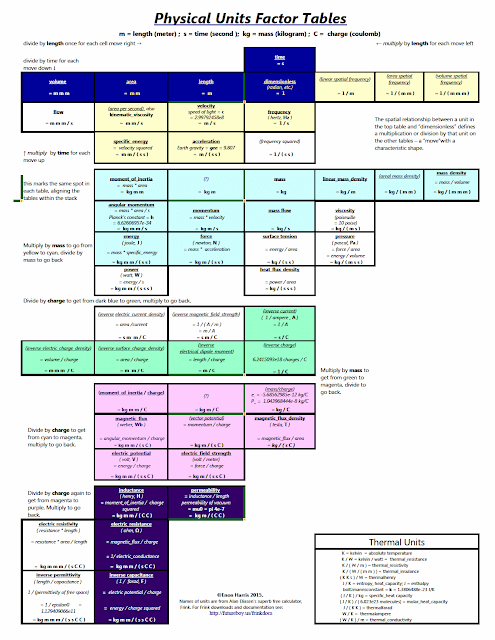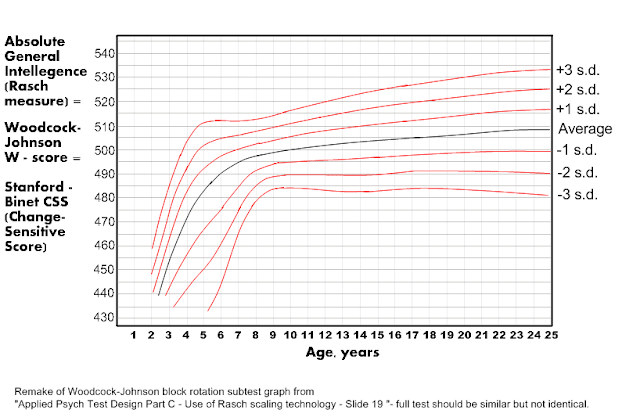 |
Physical Units Factor Tables (PUFT)Link to full-size PUFT picture[Edit: Link to PDF] |
The Physical Units Factor Tables organize 50 types of physical units by their factors of length, time, mass and charge so that the mathematical relationships between physical units are easy to see.
The Physical Units Factor Tables encourage anyone who can multiply and divide simple fractions to deduce equations in mechanics and electromagnetics .
The single-page document is also marginally legible when printed in color on a single sheet of letter-size paper, but students and teachers with access to computers will likely find the electronic version easier on the eyes.
Each move left represents multiplication by length, each move down is division by time ( = multiplication by frequency). Similarly, moving right represents division by length and each move up represents multiplying by time. These factors are the same in all tables in the stack, with each lower table having an additional factor:
light blue table = * mass
green table = * 1/charge
pink table = * mass/charge
purple table = * mass/charge^2
The names of the unit types are taken from Alan Eliasen's wonderful calculator and physically-typed programming language, Frink. (Except for the ones whose top line is in parentheses; these names aren't listed in Frink, though it can easily compute using such quantities.)
The original was done in an Open Office spreadsheet, then saved as a PDF file. Among several other versions, I also have one that is more legible from a distance for use as a poster.
If any publishers or science teachers are interested in using PUFT, please let me know.
